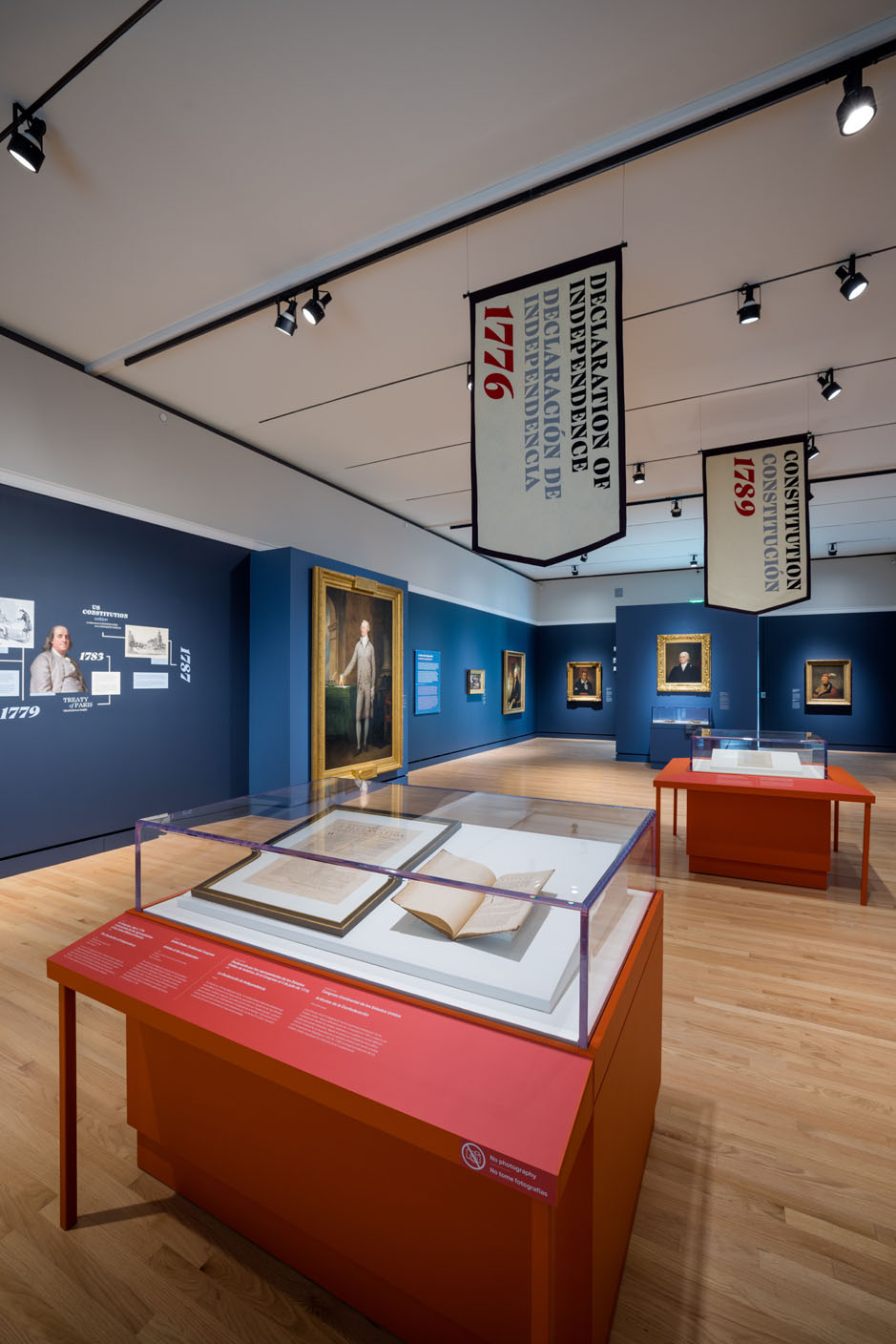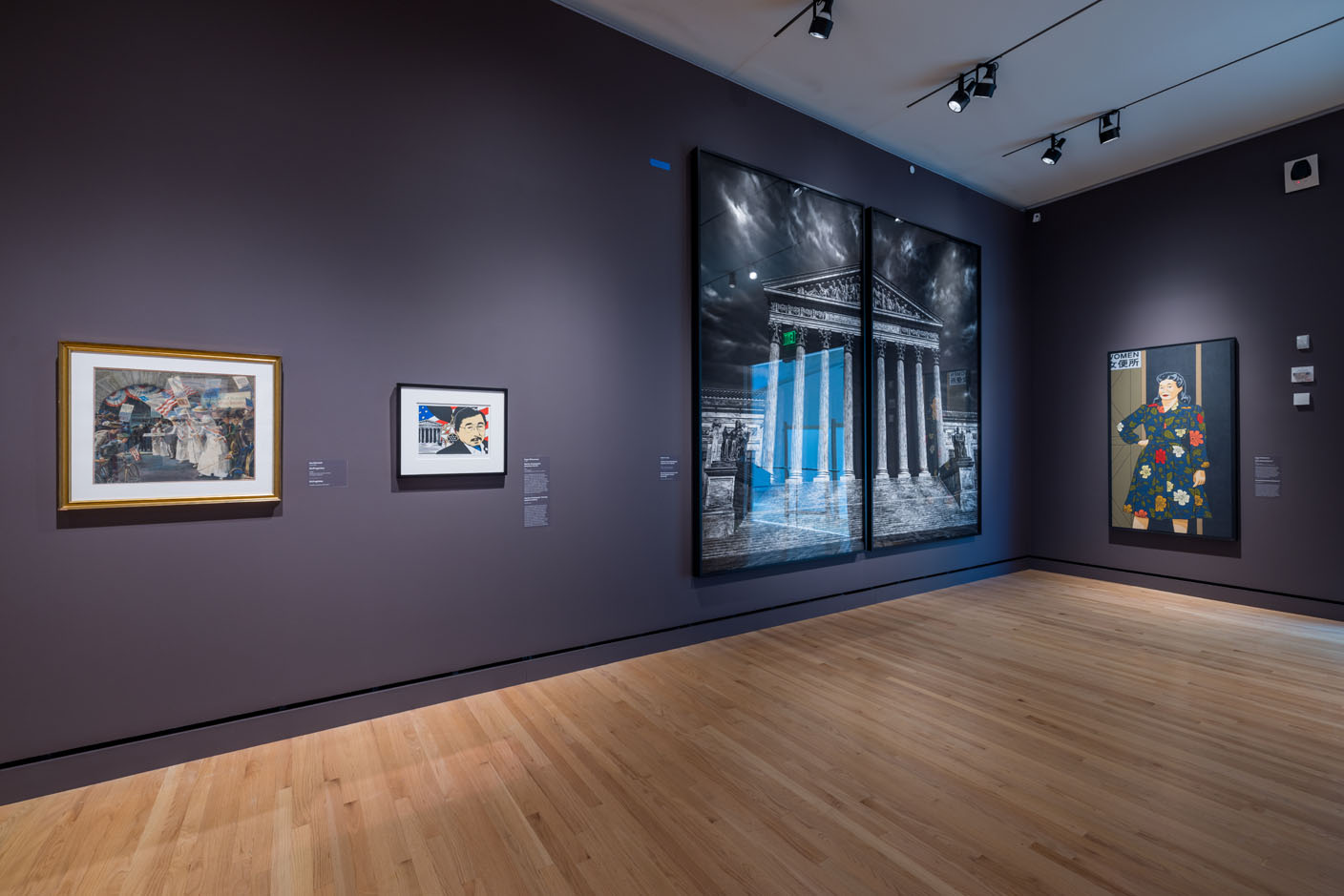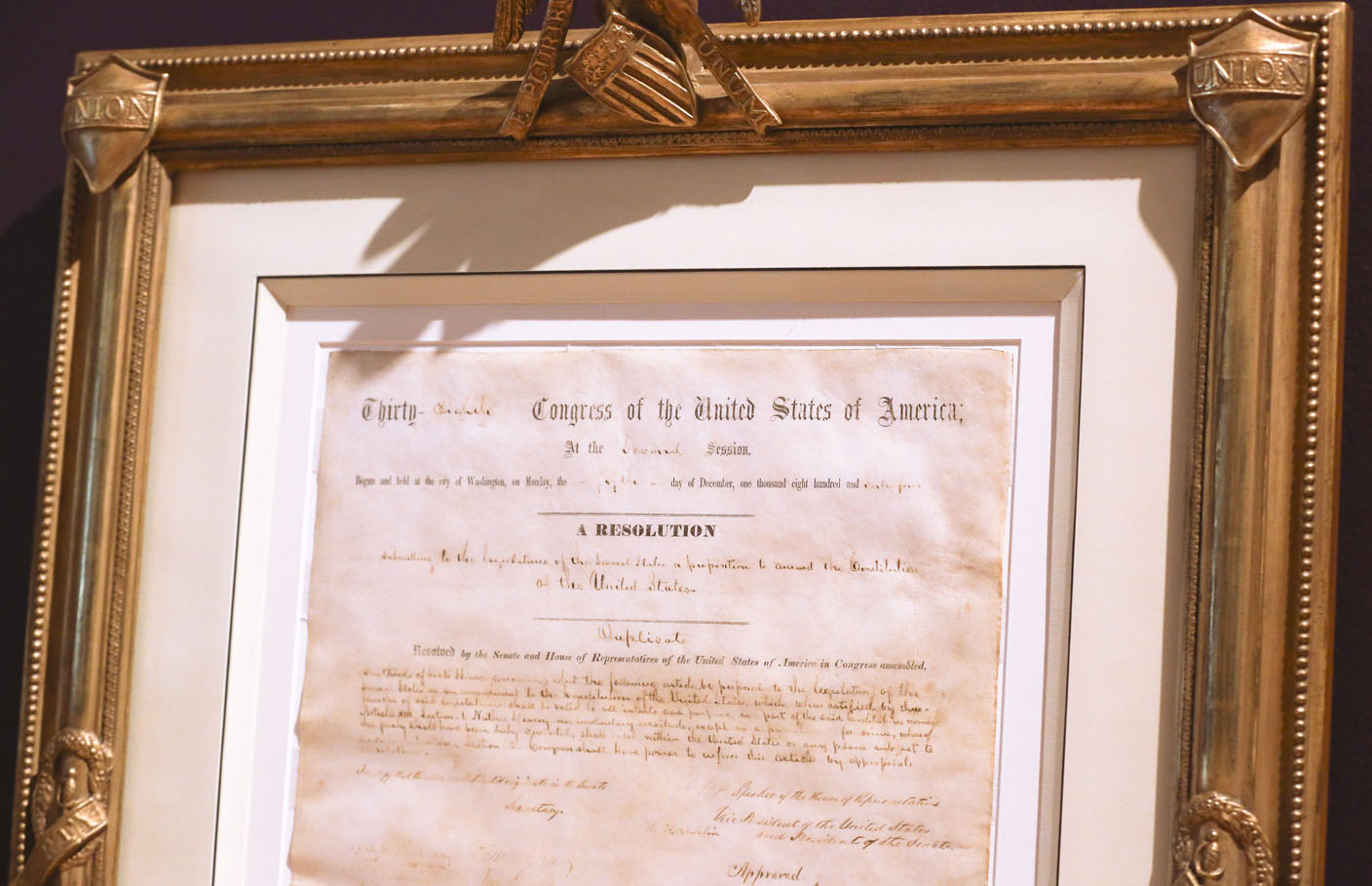April Wallace
awallace@nwaonline.com
Arkansans interested in seeing the founding, historical documents of our country need not go all the way to Washington, D.C., this summer. All it takes is a quick drive down the road to Crystal Bridges Museum of American Art to see “We the People: The Radical Notion of Democracy.”
There you can examine an original print of the U.S. Constitution, the Declaration of Independence, the Articles of Confederation, the proposed Bill of Rights and the Emancipation Proclamation — with President Abraham Lincoln’s signature still very clear. All are displayed among both historical and contemporary artworks to give context to the most important moments in our country’s history.
“To see originals in person would mean a trip to D.C. or a special, rare library like Sawyer Library at Williams College (Mass.) for founding documents,” says Austen Bailly, chief curator at Crystal Bridges. “Many were in foundations and collections and not accessible to the public.”
Citadel founder and CEO Ken Griffin purchased the original print of the Constitution late last year with the hope of making it accessible to the public. When Crystal Bridges Board member Olivia Walton learned of the sale, she partnered with him to bring it to the Bentonville museum first.
It’s also a first, Bailly says, to have so many documents with the founding words, the very basis for our democracy, all together. She believes it’s the museum’s job to create new opportunities like this and illuminate connections that may not have been made clear before.
“This opportunity is deeply connected to the art we show here,” Bailly says. “Visual arts can so emphatically demonstrate the relevance between the documents and the art and give a new perspective.”





In the galleries are the sort of traditional portraits that you might on some level expect: a larger-than-life Alexander Hamilton by John Trumbull; a Thomas Jefferson by Matthew Harris Jouett; James Madison by Chester Harding; and of course, George Washington by Gilbert Stuart.
But alongside the faces of these founding fathers are some influential members of Indigenous communities, such as the Portrait of Thayendanegea (Joseph Brant) by Charles Willson Peale and Portrait of Red Jacket by John Lee Douglas Mathies.
“We at Crystal Bridges are very interested in the realities of Native American art and history being completely part and parcel of American history,” Bailly says. “It’s ordinarily separated out … but we want to give credit where credit’s due, that the Native leaders influenced the non-native in the early years of the U.S. and that their active conversations really did shape who we became as a nation.”
Given that the idea for a democracy came from an Indigenous tribe’s practices, that was a foundation for the founding fathers to think about union, confederacy and peace as principles that underlie the Constitution, Bailly says. The visible iconography of these Native leaders in their regalia goes hand-in-hand with the written words of the time.
Four black and white photographs by Shelley Niro recently acquired by Crystal Bridges further these connections. They’re titled “Unity,” “Treaties,” “Borders” and “Boundless,” and in them two hands start out reaching toward each other, then balling up into fists, clasping hands and finally embracing, wrapping around each others’ wrists.
A replica of a Revolutionary War period, two-row belt of the Seneca tribe made by Richard David Hamell is next to the photographs and is reflected in Niro’s second picture, “Treaties.”
“There’s a ton of symbolism in these objects,” says KC Hurst, chief marketing, communications and digital officer. “This belt [offers] a means of storytelling. The two lines symbolize the two Indigenous cultures. They can be aligned side-by-side without crushing each other or causing conflict, that idea of living in unity.”
The Niro photographs are followed by an oil painting, “Niagara and the Rapids” by John Vanderlyn, which continues placing Indigenous history in the historical American timeline with a visual of the homelands of the Seneca, the Iroquois and the place where leader Joseph Brant was removed before going on to have important diplomatic relations with the United States.
Among the opportunities to see something rare are six works by Jacob Lawrence depicting notable moments in the formation of our country, such as the Boston massacre, Alexander Hamilton before his duel with Aaron Burr and scenes with enslaved persons at Massachusetts Bay. They were painted as part of a series of 30 works made between 1954 and 1956, and more than half of them are in a private collection. The closest any of them has come to Arkansas was during a national tour that stopped in Birmingham, Ala.
“He was ahead of his time as an artist,” Bailly says. “He was going back to history to founding moments and excerpting lines from texts of speeches and incidents from history.”
Lawrence made these modern, angular paintings as the Supreme Court ruled that racial segregation in schools was unconstitutional through Brown vs. Topeka Board of Education and on the cusp of the civil rights movement.
“He was thinking about making history alive and new and relevant,” Bailly says, which fits the goal of “We the People” exactly.
Before guests exit the exhibition, they are faced with a gigantic two-paneled charcoal work “The United States Supreme Court (Split)” by Robert Longo that stands 10 feet by 12 feet. At first glance, it’s as detailed and clear as a photograph. Only if you move in closer does it become apparent that it’s a drawing. Having two panels depicts the reality of split decisions and the meaning behind a court’s vote, and taking a photo and then enlarging it through hand transcription depicts the monumental scale of the Supreme Court’s decisions, Bailly says.
“This show presenting art and history for all to engage with on their own terms is really not to be missed,” Bailly says. “It’s very rare for a hometown museum to marshal these resources right in their own back yard at a moment when it’s in the news on a daily basis — and that’s a really exciting opportunity.”
__
FAQ
‘We the People: The Radical Notion of Democracy’
WHEN — Through Jan. 2, 2023
WHERE — Crystal Bridges Museum of American Art
COST — Free, but tickets are required
INFO — crystalbridges.org
__
FYI
Save The Dates
Due to the “We the People” exhibit coming together more quickly than others and it debuting on a holiday weekend, opening events surrounding it were pushed out by a couple of weeks. On July 28, Jeffrey A. Rosen, former United States Deputy Attorney General, will give a lecture. Crystal Bridges organizers are in conversation with various former first ladies, secretaries of state and other high profile speakers to attend the program with some of the artists included in the show.
Crystal Bridges Museum of American Art is also planning a festival-like variety of activities surrounding the exhibit for Constitution Day, which is Sept. 17.
— Source: Crystal Bridges Chief Curator Austen Barron Bailly



